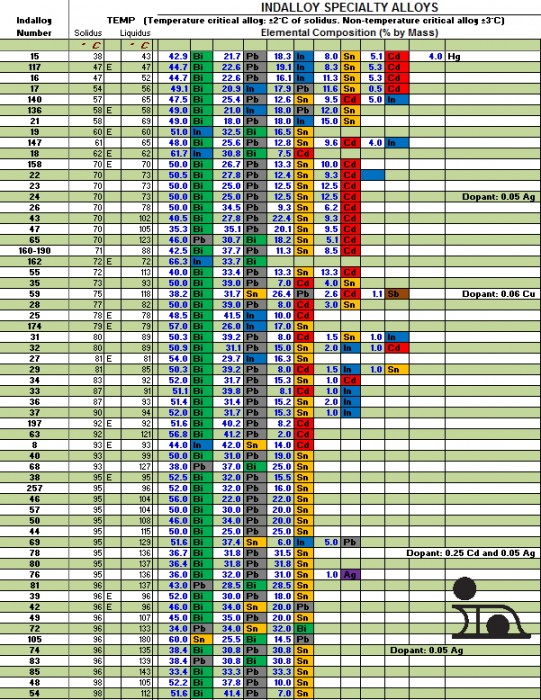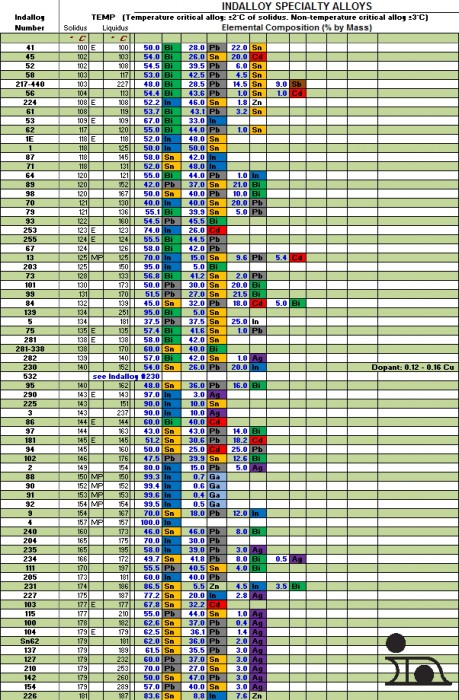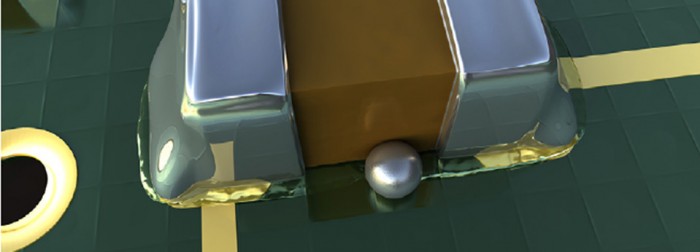If you’re familiar with solder you know the traditional 63Sn/37Pb alloy and at least one higher temperature Pb-Free alloy (probably one of the Sn/Ag/Cu alloys which are very popular right now). Did you realize there are almost 200 metal alloys which melt below the temperature of Sn/Pb? The element indium is used in many of these alloys, along with elements such as gallium, bismuth, tin, and lead. Let’s take a closer look at the alloys that we consider “low temperature”:
Liquid Metal Alloys
There are 6 non-mercury-containing alloys that melt at, or below, 30°C. These alloys are based on gallium, with indium, tin, and (in one case) zinc to modify gallium’s already low melting point.

Low Temperature Alloys Which Melt Below the Boiling Point of Water
Imagine forming a solid metal object that melts when it is placed in boiling water; that’s exactly what these alloys do. Alloys in this temperature range are often used as fusible alloys, designed to strategically melt at specific temperatures – think fire sprinkler activators. They can also be used for tasks that require an alloy that is quickly and easily reformed or released from a work piece – notable applications include holding lenses for polishing, or internally supporting metal tubes during bending operations.
All of these alloys contain bismuth. Many of these alloys contain Pb and Cd, but you still have a few choices if you’re looking for an alloy without lead or cadmium in this temperature range:
- 51%In / 32.5%Bi / 16.5%Sn (60°C eutectic)
- 66.3%In / 33.7%Bi (72°C eutectic)
- 57%Bi / 26%In / 17%Sn (79°C eutectic)
- 54%Bi / 29.7%In / 16.3%Sn (81°C eutectic)

Low Temperature Soldering Alloys
This group of alloys can be further broken down into the following sub-groups:
- Sn/Pb/Ag alloys: These alloys are similar to 63Sn/37Pb but use a small amount of silver to lower the melting point and to increase shear strength, wetting, and fatigue resistance – when compared to traditional Sn/Pb.
- Indium-based alloys: Indium-based alloys have superior thermal conductivity and ductility compared to other low-temp alloys. These alloys are also relatively soft. The combination of these traits makes them perfect for thermal interface materials.
- Bismuth-based alloys: These alloys are good alternatives to lead-containing low-temperature solders when cost is valued more than thermal conductivity and ductility.

Our engineers have years of experience with these specialty alloys, and they like to discuss low-temperature applications. You can contact them at: [email protected]
~Jim


